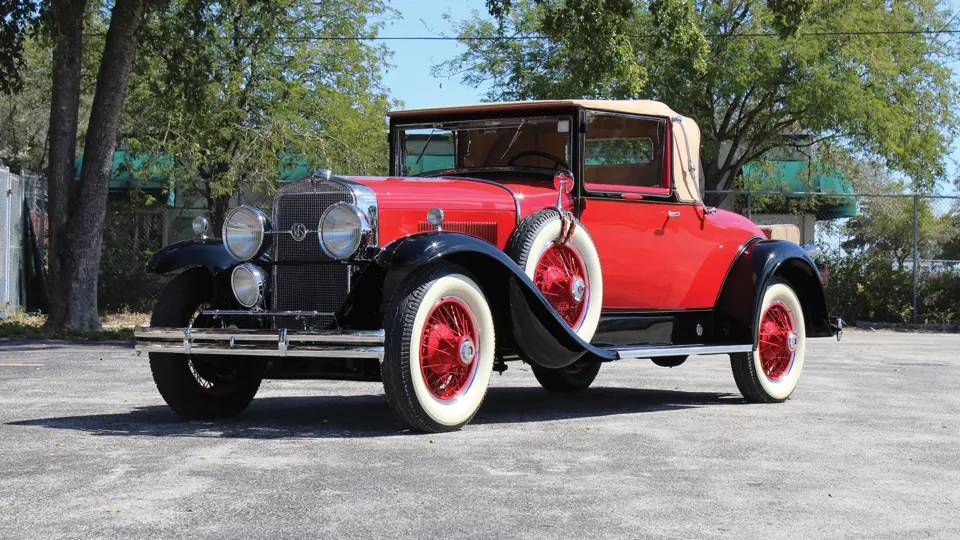Although not the first of the “companion cars,” Cadillac’s LaSalle was almost certainly the finest. Conceived to fill a gap between Buick and Cadillac, the LaSalle has the distinction of being America’s first styled automobile.
The “companions” were new makes created to broaden a manufacturer’s or division’s market share; in addition to Hudson‘s Essex, early companions included Jewett from Paige and the short-lived Ajax from Nash. Whippet, the Willys companion, became the third-best-selling car in 1928. Upscale companions included Marmon’s Roosevelt and the Blackhawk from Stutz. For a brief period, all General Motors divisions except Chevrolet had them. Pontiac, in fact, began as a lower-priced companion to Oakland.
In order to make the new car special, Cadillac president and general manager Lawrence Fisher recruited a young designer named Harley Earl from Don Lee, the Los Angeles Cadillac dealer. Lee had his own custom body shop, and Earl had made a name for himself designing cars for Hollywood stars and other L.A. personalities. Until that time, what passed for styling had been done by “body engineers.” Earl, however, approached cars as objets d'art, and taking a cue from Hispano-Suiza sketched up a car with flowing lines accented by two-tone paint. The success of LaSalle led to Earl’s appointment as head of a new GM section called “Art & Color,” the automobile industry’s first in-house styling department.
Mechanically, the LaSalle was a small Cadillac, with a shorter wheelbase and a shorter stroke version of Cadillac’s L-head V-8 engine. Eleven body styles were offered, Introduced in March 1927, LaSalle sold more than 26,000 cars in its first year. In 1928, LaSalle helped push Cadillac division output over 40,000 cars for the first time ever. For 1929, with Cadillac it pioneered the synchromesh transmission; that year production of LaSalles exceeded Cadillacs by nearly 5,000 cars.
As the first project for a major manufacturer by design legend Harley Earl, the LaSalle is considered the first American car to have been styled from concept to production. This example is Fisher Style 8580, which denotes it as a 2/4 Passenger Convertible Coupe with rumbleseat. Finished in two tones of striking red with black fenders and belt molding and complemented by tasteful yellow pinstriping. Tan upholstery, tan top and tan cloth covering on the trunk makes for a handsome presentation of this CCCA Full Classic.
Powered by a 328-cid, 85-hp L-head V-8 engine that is connected to a three-speed synchromesh manual transmission on a 134-inch wheelbase, the LaSalle is well-equipped with desirable accessories, including Art Deco-inspired sideview pedestal mirrors attached to dual side-mounted spares, radiator stone guard, painted wire wheels, twin cowl vents on either side of the attractive vee-shaped molding, whitewall tires, golf bag compartment, landau irons, clock and finely detailed with leather leaf spring covers.
The LaSalle displays a tag that shows it to be a Senior class car in the Cadillac/LaSalle Club and is reported as a National First Prize winning vehicle. It also is a National First Prize Winner with the respected AACA. A well-maintained CCCA Full Classic, this 1929 LaSalle Convertible Coupe will certainly make an ideal tour or event car for its next owner, and it is sure to spark many interesting conversations wherever it goes.



 | Fort Lauderdale, Florida
| Fort Lauderdale, Florida


